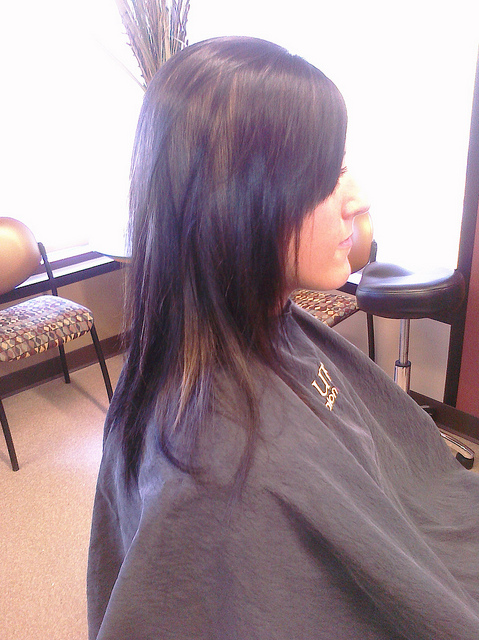
 A lot of people have been asking me about hair care lately, particularly about toxic hair dyes. What’s safe and what’s not? Why should we be concerned? What sort of salons are likely to be more health conscious?
A lot of people have been asking me about hair care lately, particularly about toxic hair dyes. What’s safe and what’s not? Why should we be concerned? What sort of salons are likely to be more health conscious?
Why Should We Be Concerned About Chemicals in Hair Dyes?
It comes down to accumulated toxic exposure. As I’ve mentioned in previous posts, hair dyes contain quaternium-15, which can release formaldehyde; phenylenediamine (PPD), which may be carcinogenic; and alkylphenol ethoxylates (APEs), potential hormone disruptors. Though studies remain inconclusive overall, many have indicated that some ingredients in hair dyes can cause cancer, particularly for those who are exposed a lot, like hair dressers and stylists.
We also need to be cautious of what we apply to the scalp because it can absorb potentially harmful chemicals and transmit them into the bloodstream. A study published in the American Journal of Epidemiology, for example, states, “Several studies suggest that toxic chemicals in hair products may be absorbed through the scalp in sufficient amounts to increase the risks of adverse health affects in women….”
What’s Safe and What’s Not?
If you talk to a hair stylist about the safest method of hair coloring, most likely he or she would tell you to avoid coloring altogether. To change the color of your hair requires a chemical reaction, so it’s difficult to completely avoid any chemical exposure. There are some more natural brands of hair coloring out there, but the actual chemical difference is slight-perhaps one molecule removed from full-blown ammonia, for example. So all in all, there’s just not a 100% safe hair color out there.
The other issue is that many natural hair dyes have not received the best reviews as far as color matching and consistent results. They may have fewer harmful ingredients, but you may not be as happy with the results. This is where you must make a decision-how much risk are you comfortable taking? If you’re healthy with no auto-immune diseases or chemical sensitivities, you may feel okay about using a regular brand once in awhile. If you’re going through cancer, or if you have sensitive skin, allergies, or chemical sensitivities, you may feel differently.
Some brands may have fewer potentially harmful ingredients than others, however, and may help lower your exposure. The FDA does not regulate hair dye ingredients, so watch labels for things like ammonia, peroxide, PPDs, coal tar (though most dyes don’t contain this anymore), toluene and resorcinol. Some natural dyes to try include Aubrey Organics, pure Henna (though realize you can’t change the color on this one if you don’t like it), and NaturaTint.
Finding a Safe Salon
Once you decide how you want to approach your hair care, the next step is to find a stylist who will work with you. Some have absolutely no experience with less toxic dyes, and others are well educated about them. Tell your stylist you’re concerned about chemicals and that you prefer hair dyes that are ammonia-free, herbal-based, low-PPD, lead-free, toluene-free and coal-tar-free. Discuss how you can reduce the number of times you have to get a complete color, such as choosing highlights or lowlights in between appointments, or going with something that’s closer to your natural shade or a lighter shade (as dark hair dyes are the most toxic) and perhaps consider embracing your gray hair.
As for some specific salons that cater to chemical-conscious customers, try Aveda salons (their dyes are more natural but do still contain ammonia). Planet Thrive has some other great less toxic hair salon suggestions for different states around the nation.
Do you have some tips for cutting back on hair chemicals? Please share.
Sources
Cheryl Blackmore-Prince, et al., “Chemical Hair Treatments and Adverse Pregnancy Outcome Among Black Women in Central North Carolina,” American Journal of Epidemiology Vol 149(8): 712-716 (1999). http://aje.oxfordjournals.org/content/149/8/712.full.pdf
Photo courtesy Utopia Salon via Flickr.com.

